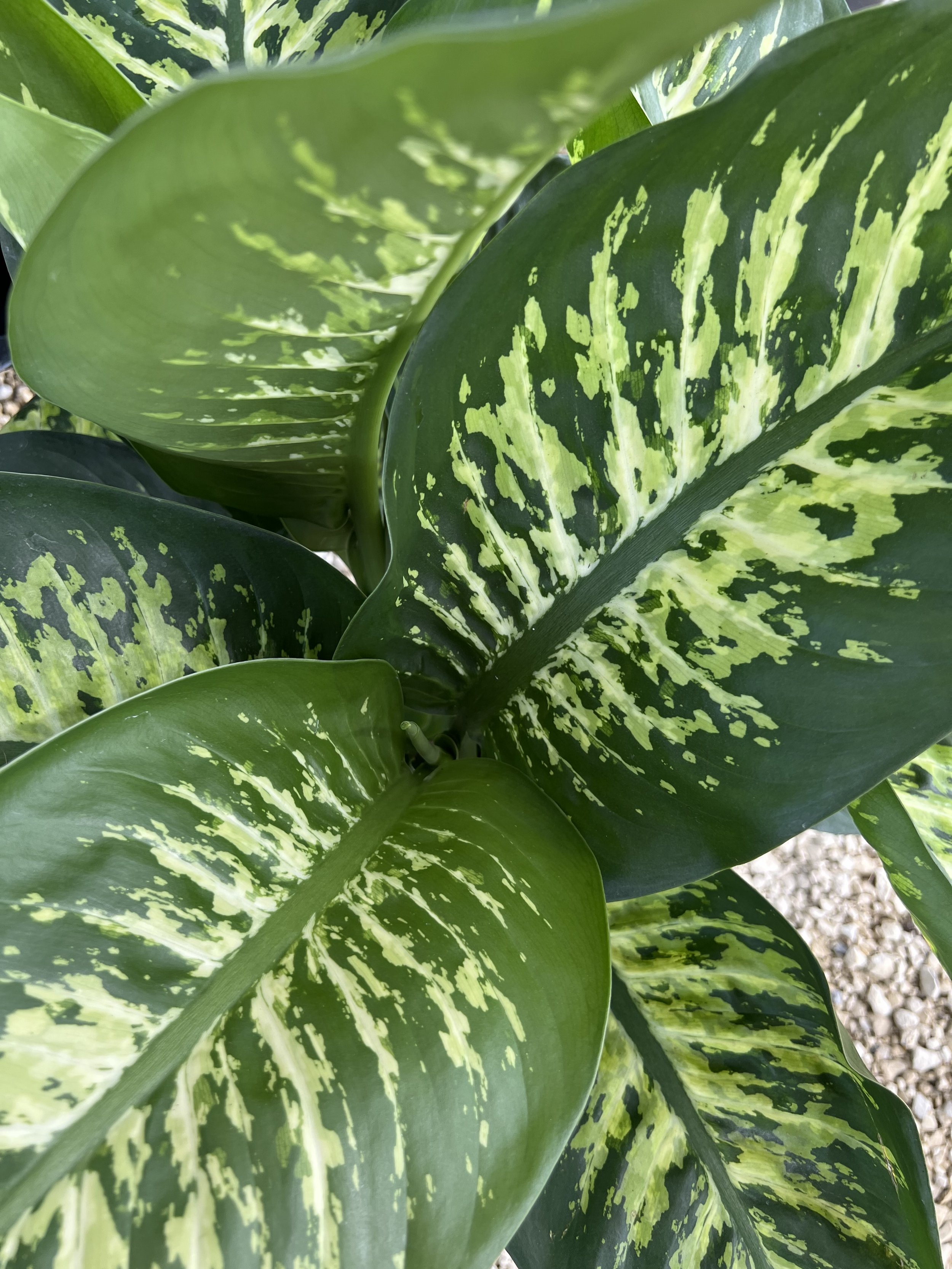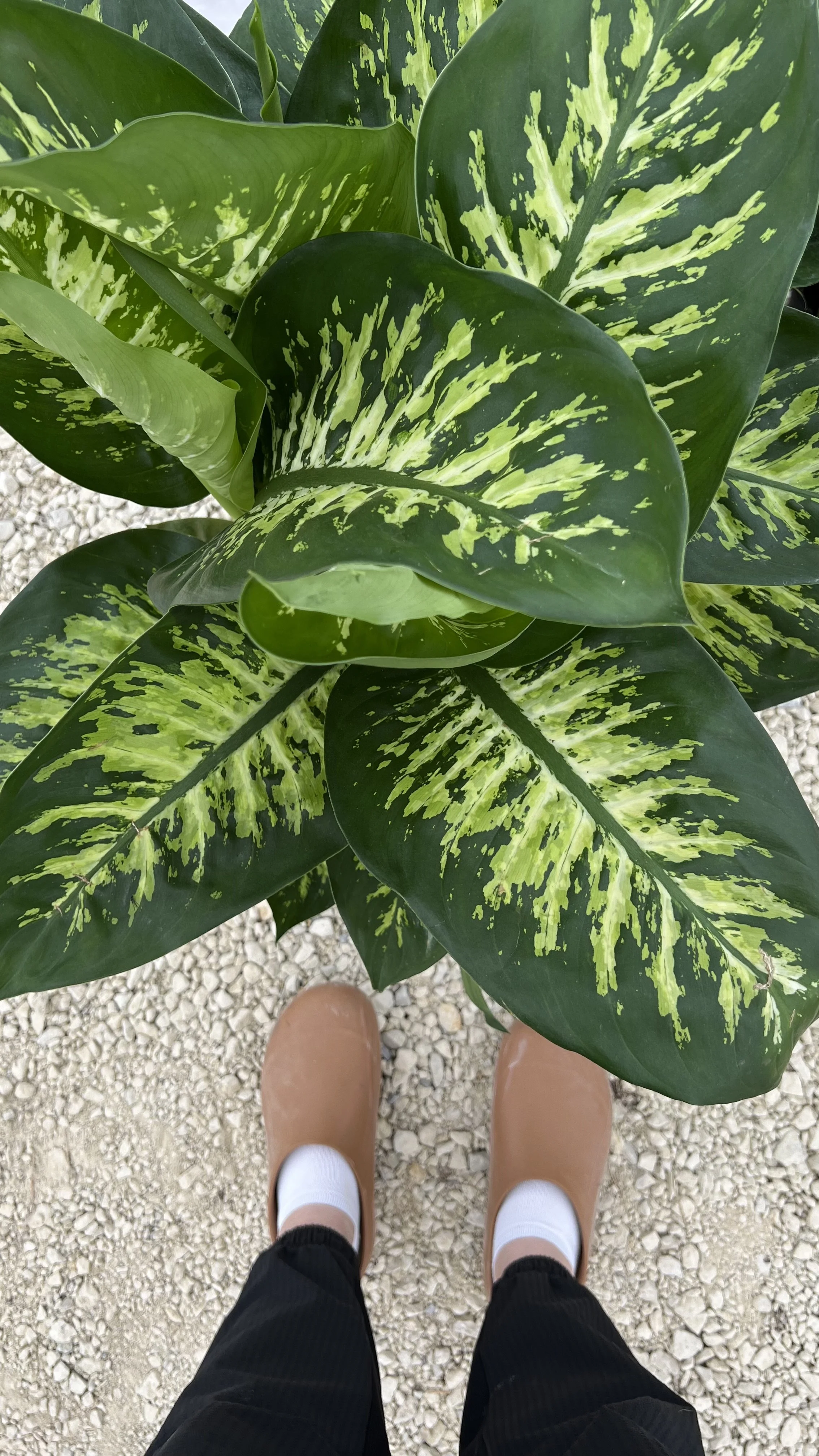
DUMB CANE
Dieffenbachia
Family Araceae
-
Light: Medium light levels are just right for dumb cane plants. Direct light can cause leaf scorch on the large variegated leaves.
Temperature: 60-90 F
Humidity: medium to high; avoid drafty areas
-
Water: Allow potting mix to become dry in the top 2-4” between waterings. Dumb cane grows from a rhizome that is susceptible to root decay if kept too soggy.
Repotting: Repot every 2-3 years into a slightly larger container (1-2” increased diameter or depth). Use a well-drained potting mix such as bark or coir based. General purpose potting mix is fine in a pinch.
Fertilizing: Either…
Water Application: Incorporate fertilizer into your watering cycle once per month March through September. Dilute an all purpose fertilizer (20-20-20) by half OR use your favorite fertilizer rated for houseplant use in your water.
Slow Release: Incorporate slow release fertilizer pellets into the top inch of potting soil every 6 months. Apply the rate indicated for indoor plants on the label. If no recommendation for houseplants is present, apply 1/4 to 1/2 the listed rate.
-
The Araceae family includes many foliage favorites including: philodendron, monstera, anthurium & pothos.
-
(Listed in order of commonality…)
Root decay caused by overwatering
Fungus gnats
Two-spotted spider mites
Thrips
Leaf tip burn from infrequent watering
-
Is dumb cane pet safe?
It is slightly toxic to animals due to a higher concentration of calcium oxalate crystals (called raphides). Read more about it here.
COC can vary in abundance in different aroid plants and can cause varying reactions when consumed by humans or animals, ranging from a slight mouth irritation to swelling of the lips and throat. Use caution when housing aroids in a home with pets. KNOW YOUR ANIMAL’S TENDENCIES!
Have a more specific question?
I’m just a few clicks away.

